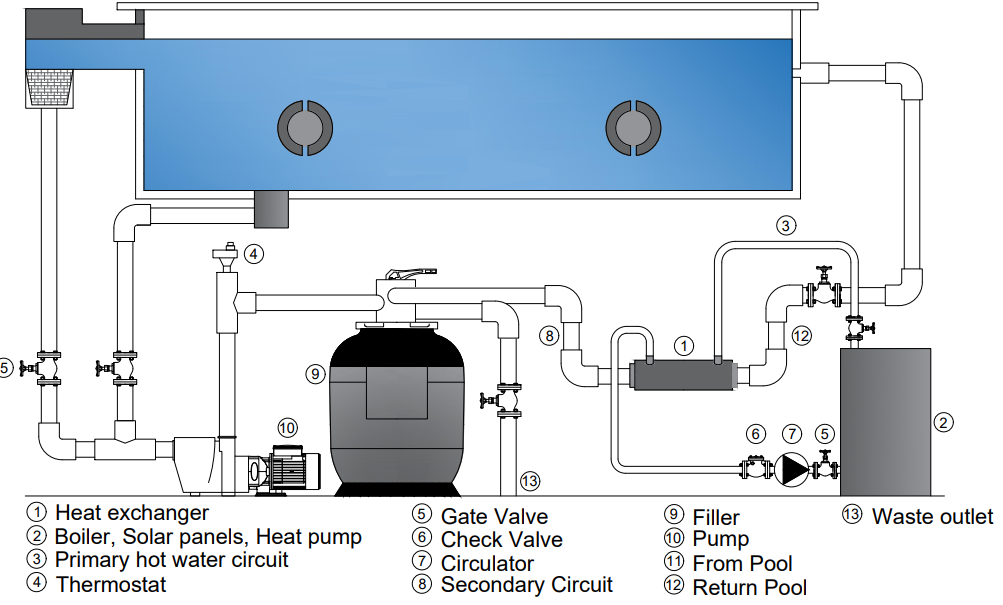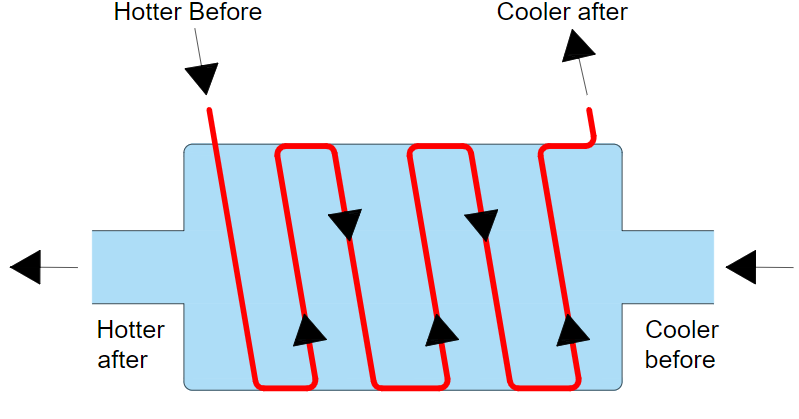- Last updated Oct 13, 2021
- Swimming Pool, Heating
Heat Exchanger
Introduction
In recent years, it has become very popular to indirectly heat pools using heat from boilers and renewable energy sources. It offers many benefits including cost effectiveness, energy efficiency and ease of maintenance. Many smart homes use boilers as a source of heat, which is very versatile and efficient. These boilers provide heat for domestic hot water, glowing floor heating, and in some cases driveway ice melting systems. In summer these boilers are used to heat the swimming pool.
High efficiency benefits
Swimming pool heat exchangers can take advantage of boiler efficiency - boilers offer more than 80% efficiency, and in some cases more than 90%. In addition to achieving high efficiency, indirect heat exchangers have an added benefit of longevity. Boilers provide hot water to heat exchangers in the temperature range of 600 ºC to 800 ºC. At these temperatures, the chlorine or salt water in the swimming pool responds relatively slowly to the heat sources used for direct fire heaters that produce flames from natural gas or propane. The temperature produced by the flame is very high, which significantly increases the reaction rate. These high response rates cause more wear and tear and shorten the life of internal heat exchangers.
Alternative energy and solar heating
Alternative energy sources such as solar and geothermal systems have become very popular in recent years. These heating methods have grown in popularity and an increasing number of our heat exchangers are being used in such systems. During the hot summer months, the production of heat from solar panels by residential and commercial establishments often exceeds the amount of heat required for various applications. This excess heat must be removed from the system. Heat sinks that remove excess heat are called "heat dumps" and are one of the best heat dumps available in swimming pools.
Working principle
A heat exchanger is a device that allows to pass heat from one fluid (a liquid or a gas) to a second fluid (another liquid or gas) without mixing or direct contact. If it is not entirely clear, consider this. In theory, we could get heat from gas jets by throwing cold water, but then the flames would go out! The main principle of the heat exchanger is that it transfers heat without transferring the heat-carrying fluid.

One hot liquid flows through a tube wrapped around a large shell, while the other, the cold liquid flows in the opposite direction. Heat is transferred by liquids: the hot liquid cools and the cold liquid heats up, which actually mixes without contact. This is a simple example of a shell and tube exchanger: In general, heat exchangers of this design operate through several large tubes with one large shell.

Sizing of the heat exchanger
The following data should be considered in selecting the ideal swimming pool heat exchanger model for your application,
Primary inlet flow
Primary inlet temperature
Secondary inlet flow
Secondary inlet temperature
Primary inlet pressure
Secondary inlet pressure